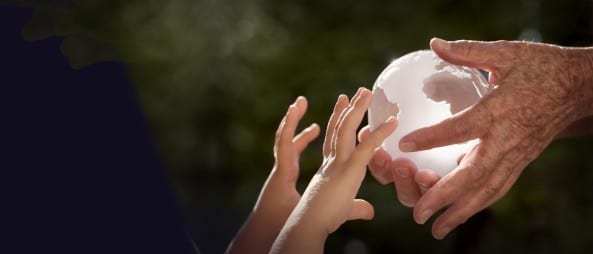
In the next 10 to 15 years, the loss of health and life in every region of the world, including Africa, will be greater from noncommunicable or chronic diseases, such as heart disease, cancer and diabetes, than from infectious and parasitic diseases.
Global aging is a success story. People today are living longer and generally healthier lives. This represents the triumph of public health, medical advancement and economic development over disease and injury, which have constrained human life expectancy for thousands of years. It also brings challenges: health care challenges, city planning challenges, nutritional challenges and economic challenges, to name a few.
As people live longer and have fewer children, family structures are transformed. This has important implications in terms of providing care to older people. Traditionally, the old-age dependency ratio, OADR (the number of people aged over 65 to people of working age), was used to assess the burden to society of supporting elderly people. A new dependency measure is called adult disability dependency ratio, or ADDR. It is based on disabilities that reflect the relationship between those who need care and those who are capable of giving it. Either way, we don’t have enough working, capable people to take care of our fast-growing centenarians.
Traditionally, elderly people were accorded a great deal of respect, and they exercised considerable authority in domestic and community affairs. Our rapidly changing global society has reduced the role of the elderly, but not their need for a safe and secure environment.
What society can do represents a daunting to-do list, to be sure. Yet we must continue, increase or begin these actions in order to manage the inevitable transitions our aging population will force. As communities, professions, states and nations, we need to engineer solutions in areas ranging from workforce productivity and immigration policy to pension plans and health care delivery.
One opportunity to begin these discussions is the third annual global health conference, sponsored by the Heartland Global Health Consortium, of which DMU is a member, and Pioneer. Held on our campus on Oct. 12, the conference will engage experts and audience members in discussions on the challenges of global aging and the actions we must undertake now to deal with them. Such discussions and actions are critical: Amid all the challenges of our world, few are as certain, and potentially profound, as the gray tsunami.
What can you do as an individual?
• Develop behavior to optimize yourhealth
• Maximize your potential for physical,social and mental well-beingthroughout the life course
• Stay connected to people throughan active social life
What can society do?
• Promote healthy lifestyles forelderly people
• Facilitate easy access for the elderlyto health screenings and healthservices
• Develop culturally appropriatesocial and recreational programs
• Provide transportation
• Continue programs that supportfinancial security
• Make cities age-friendly
Triple-board-certified in family medicine, geriatrics and hospiceand palliative care, Yogesh Shah, M.D., is associate dean of globalhealth and director of the Memory Clinic at Des Moines University.

